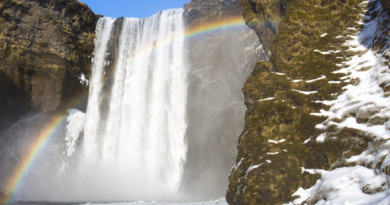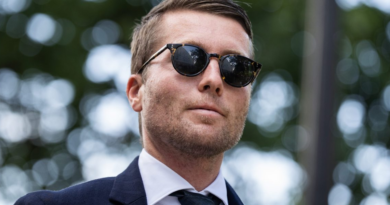The stranded astronauts are stoic. NASA shouldn’t be
The one thing you could count on was that Suni Williams and Butch Wilmore, NASA astronauts and retired Navy captains both, would maintain stiff upper lips.
Their planned eight-day trip to the International Space Station (ISS) is instead going to last eight months, the result of significant problems with the Boeing craft that delivered them. But when Williams and Wilmore met with members of the media via video link last Friday, the two betrayed little frustration.
“Absolutely not,” Wilmore said when asked if he felt let down by multiple onboard issues that forced the Boeing Starliner to return to earth unmanned on Sept. 6, three months after he and Williams made a troubled flight there in June. At NASA, Wilmore added, “We go beyond. We do things that are out of the ordinary and we send humans to space. And yeah, we’re here today on the Space Station. Even today, this operation—this is not easy.” Williams, the mission’s pilot, added “We’re both Navy. We’ve both been on deployments. We’re not surprised when deployments get changed.”
So Williams and Wilmore will have months, not days, at the ISS, as they await a SpaceX craft to reach the station and bring them home in February 2025. Given the deep experience that each brings to their role, including extensive previous time in space, the ISS’s operations will likely be the better for it.
But that doesn’t solve NASA’s larger problem: It is a government agency that has doled out billions of dollars to work with two private companies on precisely these kinds of space hauls—and a decade after that collaboration began, it’s still unclear what value the space agency is getting for taxpayers’ money.
Part of the Starliner mission was to prove that people could safely fly in the Boeing craft to the ISS, which orbits some 250 miles (400 kilometers) above Earth. This was the first crewed flight of the vessel, and it occurred 10 years after NASA awarded Boeing a $4.2 billion contract specifically to complete the development of the Starliner to transport its astronauts to and from the space station. (SpaceX was awarded $2.6 billion for its Dragon craft for the same purpose.)
However, this Starliner flight raised more questions than it answered. After a delayed launch, the craft’s journey to the ISS was beset by significant problems involving helium leaks and thruster failures. And Williams and Wilmore remained at the space station when Starliner returned home because NASA deemed it too risky for them to be on board.
Despite additional thruster issues and a temporary glitch in Starliner’s guidance system during reentry, the craft made a “bull’s-eye landing” in New Mexico’s White Sands Missile Range, said Steve Stich, NASA’s commercial crew program manager. Still, Stich said during a news conference, “I think we made the right decision not to have Butch and Suni on board.”
It’s the latest disappointment in Boeing’s ongoing attempt to get a manned craft up to speed, an effort that has been problem-plagued since at least 2018 when a government agency said both Boeing and SpaceX were having “difficulty executing aggressive schedules.”
Setbacks are to be expected, especially with spacecraft that are still in development, both Williams and Wilmore said during the 40-minute media session from the ISS last week.
“When Butch and I were preparing for this flight, we talked about it a lot and talked about it being a test flight,” said Williams, who will become commander of the ISS in a few weeks. “It (the mission) was scheduled for eight days. There could be other things that would keep us here a little longer.”
“I mean, we’re testers. That’s what we do,” she added. “We wanted to take Starliner to the completion and land it back on land, at home. But you know, you have to turn the page and look at the next opportunity and do good for the agency and the country.”
That will come at some personal cost. Williams mentioned fall plans that had included spending time with her elderly mother, while Wilmore noted that he would miss most of his younger daughter’s senior year of high school. Both astronauts are expected to be able to cast ballots from space for the upcoming presidential election in the United States.
The two now join an ISS that will temporarily house 12 astronauts from the U.S. and Russia. As they’ve done since arriving, Williams and Wilmore will assist in conducting experiments and undertaking maintenance and repair tasks on the space station itself.
As for NASA’s future with Boeing, the path forward is not clear. The company’s first test of Starliner in 2019, with no one aboard, ended up in the wrong orbit and missed the ISS. Its 2022 re-do uncovered more problems and a repair bill that was reported to top $1 billion. In total, Boeing has blown through nearly $1.6 billion in financial charges on Starliner since the program began—and that does not include what it will cost to fix the problems encountered on this mission. (Asked by the New York Times about the future of its space business before Starliner’s return, a Boeing spokesperson said the company “continues to focus, first and foremost, on the safety of the crew and spacecraft.”)
On the commercial side, Boeing has had several recent catastrophes, including two Boeing 737 Max 8 planes that crashed—one in 2018 and another in 2019—killing 346 people. This has cost the company more than $2.5 billion in settlements. And, in January 2024, a door plug blew off of a Boeing 737 Max 9 jet just moments after takeoff, forcing an emergency landing. The company is also mired in a labor negotiation with more than 30,000 workers, who walked out last week, and is attempting risky cost cuts at the same time.
NASA chose to book SpaceX for the February ride home for Williams and Wilmore.
SpaceX has had its own problems, including the failure of its Falcon 9 rocket to launch earlier this year. But it has successfully launched 13 crewed flights to space since 2020, including nine missions for NASA. On Sunday morning, the company completed a historic mission that featured the world’s first all-civilian spacewalk from its Polaris Dawn craft.
Asked what Boeing could have done differently in the development process for Starliner, Williams replied, “That is a very interesting and a very fair question,” but declined to get into specifics. “When you push the edge of the envelope again, and you do things with spacecraft that have never been done before, just like Starliner, you’re going to find some things. And in this case, we found some things that we just could not get comfortable with putting us back in the Starliner when we had other options.”
NASA outsourced the actual building of the spacecraft to Boeing and SpaceX in order to focus on larger goals, like reaching Mars. Someday, there may be an easier way to ferry the agency’s astronauts to and from the space station, but for now, there is nothing Williams and Wilmore can do but work and wait.
Still, Williams said, “This is my happy place…It’s very peaceful up here a lot of times. There’s a lot of work that’s going on, but it also gives you a little time to be introspective.” Back on Earth, it falls to NASA’s decision-makers to figure out the next steps—and how to go to space without its astronauts being stranded there.
More must-read commentary published by Fortune:
The opinions expressed in Fortune.com commentary pieces are solely the views of their authors and do not necessarily reflect the opinions and beliefs of Fortune.



